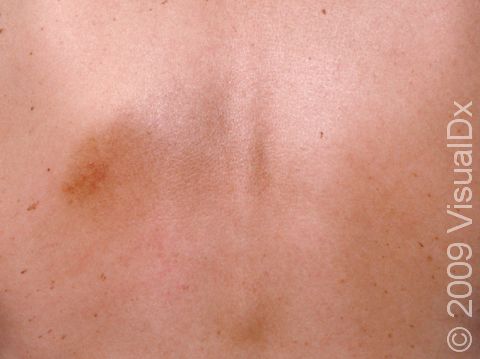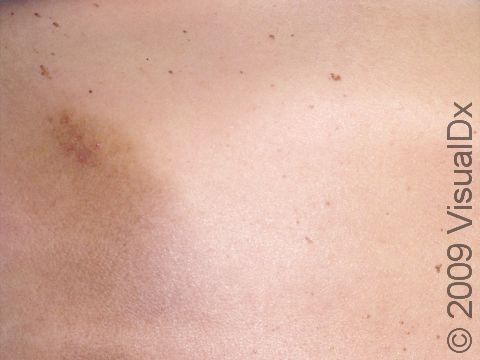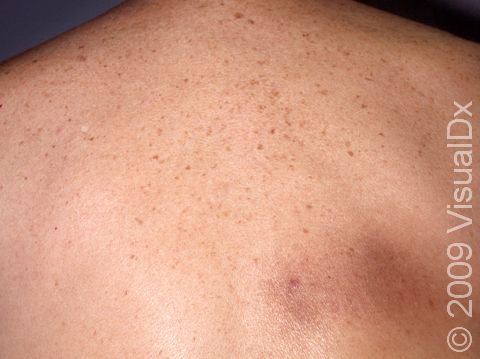Notalgia Paresthetica
Notalgia paresthetica is a condition where the skin of the middle of the upper back becomes itchy. Notalgia paresthetica may be caused by a problem with the nerve cells that provide feeling to the skin of the upper back (sensory neuropathy). There is often a darker patch (a flat, smooth area of skin larger than a thumbnail) where the skin is itchy. This is due to chronic rubbing and scratching of the affected area.
Who's At Risk?
Notalgia paresthetica can affect people of any age, race / ethnicity, and sex. However, it is thought to be most common in middle-aged to older adults. Women seem to develop notalgia paresthetica more frequently than men.
Although researchers are not certain what causes notalgia paresthetica, some speculate that spine disease due to age or injury may press on a nerve providing feeling to that area of the skin, which leads to itching.
Signs & Symptoms
The most common location for notalgia paresthetica is the upper back, especially between the shoulder blades. The area may be confined to one side of the upper back, or it may occur in the middle of the upper back, over the spinal bones.
Notalgia paresthetica often occurs without any obvious changes to the skin. If skin changes do occur, there may be a well-defined patch of darker skin over the affected area.
Although periodic itching is the main symptom associated with notalgia paresthetica, some people notice pain, tingling, or a change in feeling (sensation) in the affected skin.
Self-Care Guidelines
Dry skin is a common cause of itching, so applying a thick moisturizer (eg, CeraVe Moisturizing Cream) to the itchy area at least twice a day can help.
If moisturizers are not helpful, try over-the-counter creams or lotions containing menthol, such as Sarna anti-itch lotion. Keep it in the fridge, as cool temperatures can also help to improve itch. Capsaicin cream (eg, Zostrix) is an extract of hot chili peppers that helps to improve itch, but the itch may get worse before it gets better, and it may take up to 6 weeks to reach its full effect. If the capsaicin cream is effective, symptoms will likely come back after you stop using the cream.
Treatments
A medical professional can typically diagnose notalgia paresthetica by taking your history and examining your skin.
If diagnosed with notalgia paresthetica, you may be prescribed:
- Prescription-strength anesthetic (EMLA, Oraqix) cream.
- Prescription-strength corticosteroid (eg, Aristacort, Lidex) cream.
If the itching and pain become intolerable or interfere with your activities, you may be prescribed an oral antiseizure (antiepileptic or anticonvulsant) medication such as gabapentin (eg, Neurontin, Gralise).
If these approaches are not effective and if your symptoms are severe enough to justify it, injection of local anesthetic near the compressed nerves as they exit the spine (paravertebral block) may be performed.
Visit Urgency
If moisturizers and over-the counter anti-itch creams or lotions are not helpful, see a medical professional for evaluation.
Trusted Links
References
Bolognia J, Schaffer JV, Cerroni L. Dermatology. 4th ed. Philadelphia, PA: Elsevier; 2018.
James WD, Elston D, Treat JR, Rosenbach MA. Andrew’s Diseases of the Skin. 13th ed. Philadelphia, PA: Elsevier; 2019.
Kang S, Amagai M, Bruckner AL, et al. Fitzpatrick’s Dermatology. 9th ed. New York, NY: McGraw-Hill Education; 2019.
Last modified on March 28th, 2023 at 11:48 am

Not sure what to look for?
Try our new Rash and Skin Condition Finder


